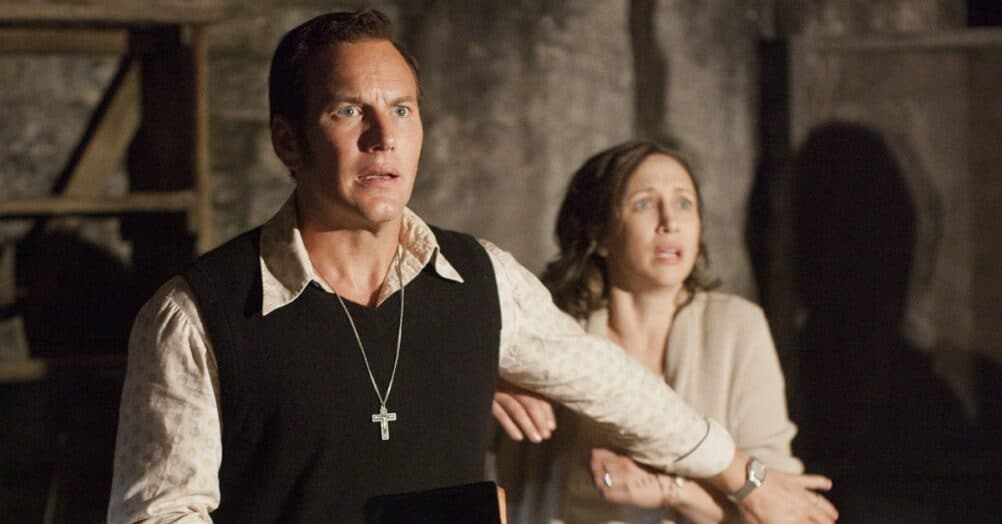Last Updated on August 5, 2021
Ink & Pixel is a source of pride and joy for me as a writer and as such, I’m always striving to take this column further for those who read and enjoy it. If you yourself, or anyone you know, helped to make any of the amazing feature animated films found within this column, I would love to talk to you to further my knowledge. Please contact me at [email protected] so we can discuss it further.

As we’ve recently learned in our exploration of Satoshi Kon’s psychological animated thriller PERFECT BLUE, the mind can be a most complex and fragile thing. Life has its way of overwhelming us from time to time and there’s no telling when the next blow to our psyches will take place. Some people will choose to embrace the horrors that come their way, and with hope in their hearts will search tirelessly for a silver lining that they believe exists somewhere amid the chaos. Others, unfortunately, will allow themselves to be consumed by their misfortune, prompting them to mentally build walls within themselves in the hopes of keeping the world and others from invading their despair. Sunny introduction, right?

And just why am I bringing such heavy topics into this week’s Ink & Pixel? The reason is thus: today we’re to explore the hyper visual live action/CGI fantasy film MIRRORMASK – a film that preys heavily on the delicate mind of its main character, Helena Campbell, and her journey into a world fabricated by seclusion, denial, and nightmares. Sounds pretty sinister, right? Well, what if I told you that this mesmerizing trip into the unknown was executed by none of than the Jim Henson Company! That’s right: Muppets, Fraggles, twisted fairy tale creatures, and now, a roller coaster ride of epic proportions inside the mind’s eye of a young and angry woman. Is there anything they won’t try?

Some might be surprised to learn (I know I was) that the film MIRRORMASK was conceived and written within a period of only two weeks. Designed as a collaborative effort between world renowned fantasy writer Neil Gaiman and long time creative partner Dave McKean, the writing and design plans for MIRRORMASK were laid out while (the pair were) staying at the famous “Henson Townhouse” formally located at 117 East 69th Street in Manhattan, New York. Also known for many years as the “Muppet Workshop”, the Henson Townhouse remained the hub of all Muppet related activity until a majority of all Henson and Muppet related operations were moved to a section of the Charlie Chaplin Studios in Los Angeles, California in 2003.

The idea and desire to create MIRRORMASK came about quite simply. If you were fortunate enough to grow up in the 80s like I did, then you no doubt remember the other high-concept fantasy films from the Henson Company such as LABYRINTH, THE DARK CRYSTAL, and THE NEVERENDING STORY. These films, each iconic and influential in their own right, captured the hearts and imaginations of millions – and the goal of MIRRORMASK was to bring some of that specific magic back to the silver screen.

Huh, would you look at that? I got so wrapped up in the origin of the film that I’ve forgotten to tell you what it’s all about. MIRRORMASK tells the story of Helena Campbell (Stephanie Leonidas), an angsty 15-year-old girl, who – in conjunction with her parents Morris (Rob Brydon) and Joanne (Gina McKee) -is a featured member of a family owned circus. Sadly, after engaging in a heated argument about the monotony of Helena’s routine life, her mother, Joanne, becomes mysteriously ill. This sad event then triggers a torrent of guilt-laden emotions within Helena, causing her to retreat into a twisted mindscape of her own dark design. Trapped within herself, Helena enters what is referred to as The City of Light, a kingdom slowly being swallowed by the malevolence of an opposing Land of Shadows. As one would expect, Helena is the only one who can rescue both herself and the people of the City of Light from the encroaching darkness; a darkness that also holds the key to her mother’s real life awakening from a deep, dark slumber.

After everything I’ve read in preparation for the writing of this article, I still find it hard to believe that MIRRORMASK was made using a budget of only $4 million dollars. The elaborate environments (though constructed through the use of a large sound stage in conjunction with blue screen technology) certainly make it appear as if more would have been spent during the making of this film. Acclaimed fantasy film artists, Brian and Wendy Froud, were approached during the film’s conceptual stage to help design the overall look of MIRRORMASK – with McKean in mind to simply direct the picture. However, as the ball began to roll, the executive producer of the film, Michael Polis, thought it best if McKean assume both the role of director and lead art design, with the assumption that it would allow McKean to have more direct control over the film’s overall presentation.

This dual responsibility proved to be a monumental task for McKean. However, wanting to both rise to the challenge and still invite others to lend their creative input and efforts to the film, McKean asked that each supporting artist on the film be given the chance to stretch their creative wings while contributing to MIRRORMASK. To accomplish this, McKean simplified his usually elaborate art style to be used in the film. The reason for this decision was not to dumb down the presentation, but rather to give the other artists a chance to add their own creative flair to the foundations of his designs. Additionally, each artist was given the chance to work side-by-side with McKean in a sort of “private art school” fashion. As a result of these tight-knit working conditions, the film boasts a variety of prolific and collaborative art styles, making it a visual cornucopia for its audience.

Interestingly enough, the film only managed to garner $866,999 in box office receipts, which by today’s standards would be considered an unprecedented flop. However, the purpose of MIRRORMASK was never to dominate the silver screen worldwide, but rather to give back to all of those who still have a place in their hearts for the magic that only the Henson company can deliver in their live-action pictures. The film was met with a series of mixed reviews both from fans as well as critics, but continues to be somewhat of a cult favorite from animation and special effects enthusiasts the world over.

It comforts me to know that at least $8 of that $866,999 grand total came from my own pocket, as I thoroughly enjoyed the film upon viewing it at the Cinema Arts Center located in Huntington, New York. I find MIRRORMASK to be quite the ride, and think that it offers viewers a unique look into the world of art by way of the cinematic medium. I wholeheartedly recommend that you seek it out and allow its visually arresting aesthetic and nightmarish themes to consume you for the 101 minutes for which it runs. You’ll be glad you did. See you next time!




















Follow the JOBLO MOVIE NETWORK
Follow us on YOUTUBE
Follow ARROW IN THE HEAD
Follow AITH on YOUTUBE